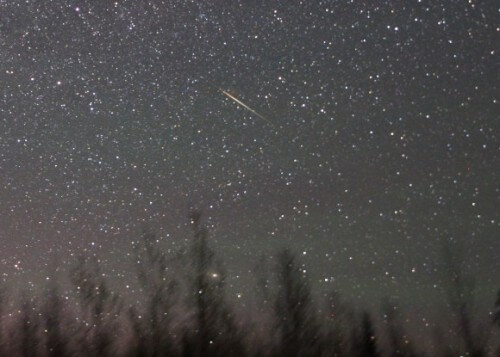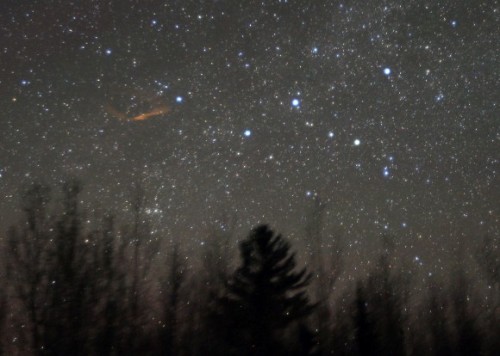The Universe Today website concludes that the meteor shower was not sweeping, but was able to observe several slow meteors, and one fireball that left a trail that remained in the sky for over 20 minutes

Universe Today website reporter Bob King, who lives in Minnesota, watched tonightThe new giraffe meteor shower that astronomy enthusiasts have been waiting for him for many weeks NASA's initial announcement. In particular, he positioned himself with his cameras towards the sky towards the peak of the meter at 02:00 Central USA Time (07:00 Greenwich Mean Time, 10:00 Israel Time).
He concludes that the meteor shower was not overwhelming, but he was able to observe several slow meteors, and one fireball that left Sobel that remained in the sky for over 20 minutes (see photo 2).
"In total, I saw ten meteors, most of them slow and beautiful, the dominant colors of which were orange and yellow. An hour and a half before the peak at 00:34 Central USA time, a bright meteor passed below the North Star with magnitude 1. A prominent trail continued to be visible in the sky for many seconds after the meteor burned and continued to be visible for over 20 minutes on camera and telescopes."
Such trails are created when the meteor rapidly passes through a sonic boom in the upper atmosphere and liquefies the air along its path. When the atoms return to rest, they release the excess energy and a flash of light fades away. The trail in the picture spread out and changed its shape according to the directions of the winds in the upper atmosphere, really spectacular to watch.

For more photos and the rest of the article in Universe Today
